Beyond The Limits: The Shaman/The Metaphysics of Light, Wisdom & Sound
When the five bright Wisdom-Lights are shining here,
May recognition come without dread and without awe;
When the divine bodies of the Peaceful and the Wrathful are shining here;
May the assurance of fearlessness be obtained and the Bardo be recognized.
When, by the power of evil karma, misery is being tasted,
May the tutelary deities dissipate the misery;
When the natural sound of Reality is reverberating [like] a thousand thunders,
May they be transmuted into the sounds of the Six Syllables.
– ‘The Fourteenth Day’, The Tibetan Book of the Dead.
About 20 years ago, in May of 2000, I remember an article popped up in the old clivebarker.com website Lost Souls about a large painting Clive Barker had made to decorate a New York City night club called Light Wisdom & Sound. This was old news at the time, as the event itself took place in the Summer of 1993, more precisely June 16th. The venue was located on NYC’s meatpacking district, on 240 W. 29th Street, between 7th & 8th.

The article went on to describe how Clive worked with three assistants to mix paints and such, completing this enormous piece in only 2 days, celebrating the opening of the club. Allen Ginsberg was also part of that night’s event and chanted the Prajñāpāramitāhṛdaya Sutra (The Heart of the Perfection of Wisdom) on stage at midnight, to celebrate the occasion. Ginsberg chanted a slightly adapted version of the Sutra he had worked on with Gelek Rinpoche (who would later perform the Buddhist ritual at Allen’s death) based on a translation by Shunryu Suzuki, with the roshi’s consent. Thanks to Jill Abrams, you can watch this reading uploaded to YouTube, here (pt. 1) and here (pt. 2). You can find out more about Ginsberg and the work he did with that Sutra here.
The opening act featured YR – Young Richard and the night’s entertainment also featured DJ Anita Sarko. That article was the first time I found out about the event and the 20×10 foot mural that Clive titled Shaman: The Metaphysics of Light, Wisdom & Sound, (the Shaman part was later dropped for the sake of simplicity however we’ll use that term to describe the figure in the painting), a magnificent vision that decorated the VIP room of the nightclub on permanent display until the club closed its doors a few years later. Cheryl Bentzen, who wrote the article for Lost Souls went on to describe the painting, offering some interpretation of it and ended by saying that The Metaphysics of Light, Wisdom & Sound “needs a new home before anyone can view this spectacular piece again.” It would be another 6 years before this painting would be seen again in a public setting.
Lost Souls was, at the time a Bent-Dress Production founded by Cheryl Bentzen and Stephen Dressler, two Clive Barker fans who met through the pen pal section of the Dread fanzine and the first time they met was in New York City when Clive was actually working on this painting. According to her personal Lost Souls website bio:
I then found a small publication called Dread and decided to write to everyone on the pen-pal page. Stephen was the only one who responded! Finally, I found someone else with the same obsession! After many letters (sometimes whole notebooks!), we decided to meet on a weekend that Clive was going to be in New York City. We were lucky enough to spend that time with Clive, watching him paint The Metaphysics of Light, Wisdom, and Sound mural. Together, we were instantly bonded. My obsession grew into total love and respect for this man called Clive Barker.
– Cheryl Bentzen, Lost Souls.
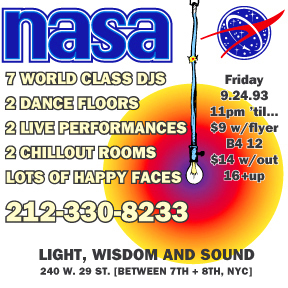
The club was trendy and chic, a magnet for counterculture icons and the hip crowds of Manhattan. American psychologist and LSD guru Timothy Leary designed the programs for the venue. That location had previously been The Parallel, then Glamorama and finally a pizzeria before being bought and redecorated by Peter Sibilia in “industrial futuristic art deco” featuring bas reliefs, 1940s propellers, a screening room and art gallery. There were numerous events from raves (some of the first US Jungle rave parties featuring N.A.S.A were spun at the club) to Sunday Gay Nights called Slurp, to special parties that could raise over $15’000 in one night to support LGBTQ non-profits, and you could find artists or socialites like Debbie Harry or Susanne Bartsch there on occasion.
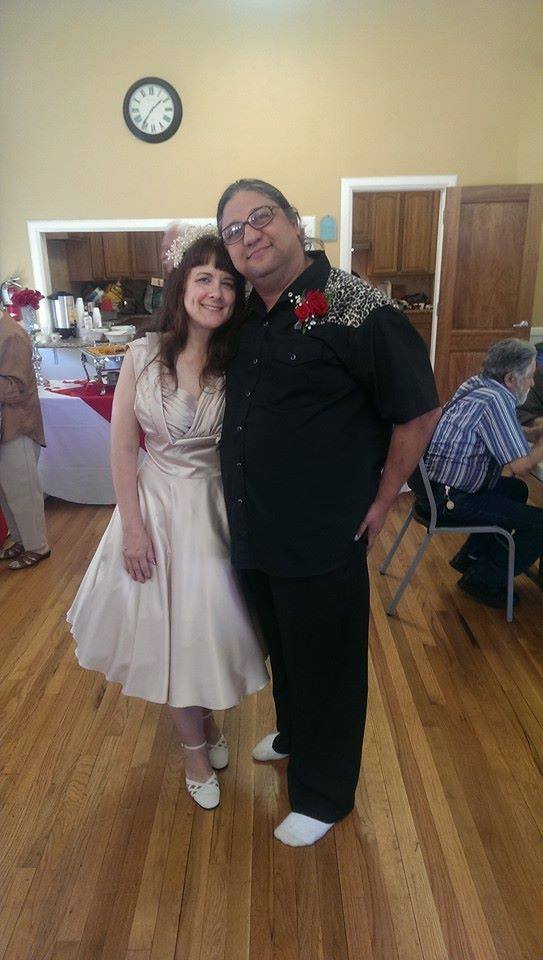
Listening to a previous @BarkerCast episode, friend of the show Ed Martinez (special FX artist, co-founder and editor of Coenobium) heard Ryan and me chatting about the Clive Barker Archive’s article about the Metaphysics of Light, Wisdom & Sound posted back in February and he and Nina Arlene immediately let us know Nina had attended the opening event back in ’93, sending us some amazing photos from their own archives. We had them on the show recently, in episode #252. Here’s an excerpt of her memory of that night— make sure to listen to the episode, to hear our entire conversation:
Nina: It was a nightclub that opened up, and it was called Light Wisdom and Sound, and it was in what you would call the Meatpacking District. Like, definitely a wharehouse-y [place] but that was chic back then, you know, to go to a nightclub where, the entrance was — not great. It was chic, saved a lot of money on decor that way. [laughs]
Ed: She was invited by Bess Cutler, of Bess Cutler gallery.
Nina: Yeah, it was Bess and Herb,… they invited a lot of people. It was— the guest list was really awesome— Debbie Harry was on the guest list, Townsend was on the guest list, but he didn’t come: Debbie wasn’t at that event, but I did meet her and her little doggie earlier, at an earlier event at the gallery, she used to walk around with her little dog in her arms. You know, this is before the Hiltons, before people walked around with their dogs, it was very unusual. [laughs] So, Light Wisdom and Sound opened up a nightclub and Clive’s painting was going to be the backdrop of the stage, so it would sort of preside over the dance floor. They invited a lot of people that were doing fan publications and stuff like that, that were familiar and had been coming to his openings, art shows, things like that. Sort of OK, these are the diehards. [laughs]
[…] We had bagels before we had anything to drink. Oh yeah, we had someone’s birthday cake too!
– Nina Arlene, @BarkerCast Episode #252
She met a photographer at the event, Victor Malafronte (the mad dog of New York’s wolf pack paparazzi!) asked for his business card and eventually got copies of some of the photos he’d taken that night. These ended up published in an issue of Coenobium covering the event and describing the painting unveiled that night. Nina also remembered that, as people hung out in the club “you could practically smell it [the painting], it was so fresh!” Here are the pictures they sent us, featuring a lovely portrait of Clive and Allen Ginsberg I’ve never seen anywhere else before. Nina is wearing the lovely light dress, fifth from the left.
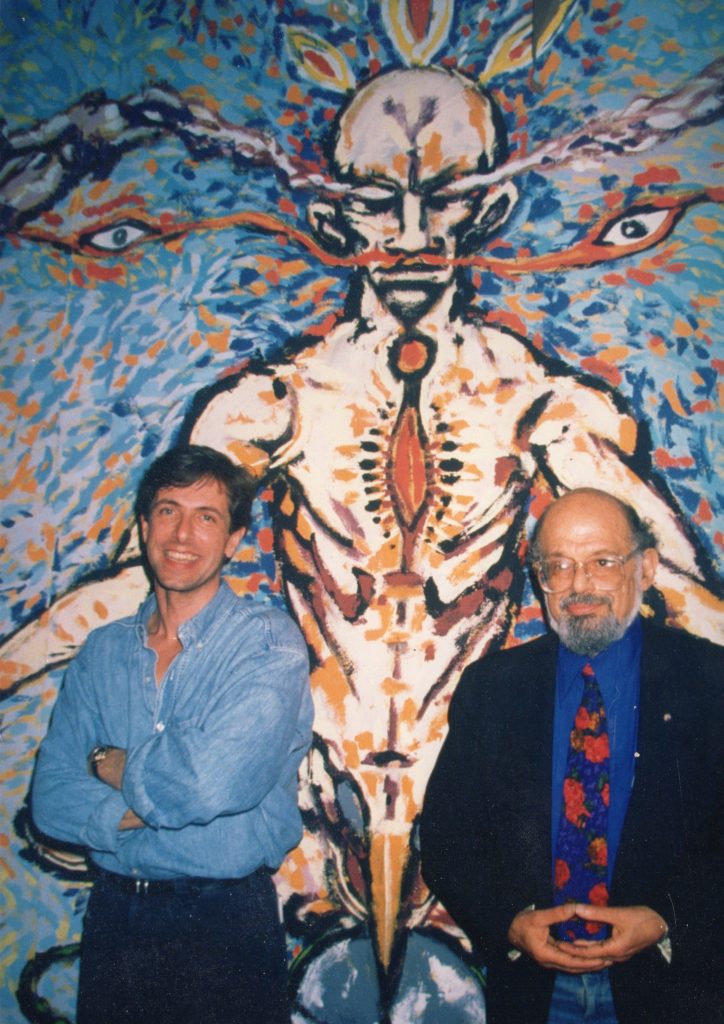
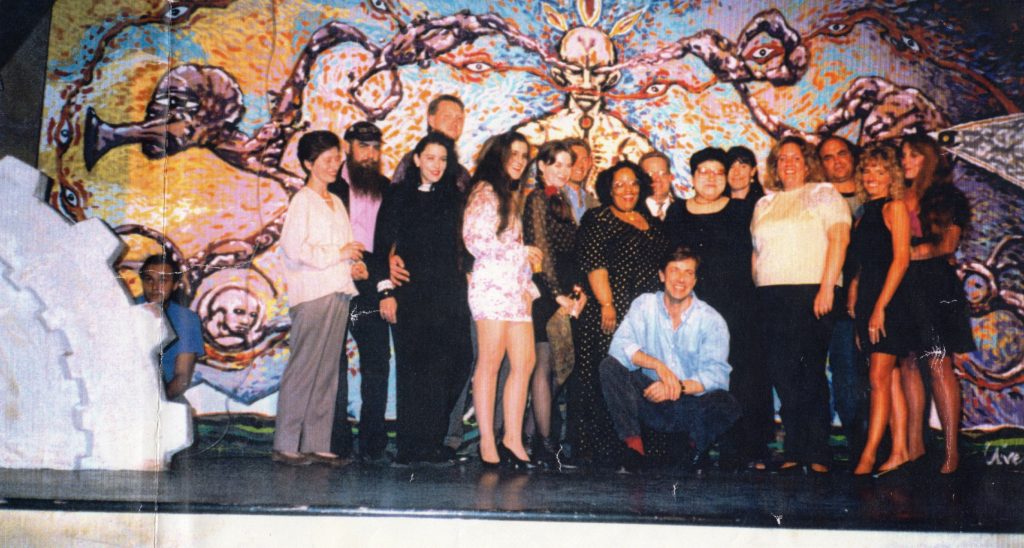
The Metaphysics of Light, Wisdom & Sound resurfaced briefly for an appearance on January 12th, 2006 for ZOOMEN, an event you may remember at the Bert Green Gallery where Clive performed a live painting and photography demonstration using 5 nude models, four men and one woman as living canvases. After that, according to the February 18th blog post by the Clive Barker Archive, the painting went into storage and remained there for the better part of 14 years. Phil and Sarah Stokes go on to describe discovering the painting, “feared lost in recent property moves….” The photos show a vibrant, beautiful loose canvas, unrolled to reveal a work of art that still draws as much attention as always:
Neighbours stopped on the street as we unrolled it, startled by its sheer size and by the vivid colours which have not been dimmed by time, and Clive got to re-visit his painting, astonished by its clarity and the imagery which has followed on into works which he has made many years later.
– Light, Wisdom and Sound, Clive Barker Archive, February 18 2020.
The painting itself is 10′ by 20′ long, and from the photos the Clive Barker Archive included in their blog article, it looks as striking today as the day it was painted. At the time, excluding the scenic backdrops Clive had worked on during his theater years, this was his largest piece and it might still be today. Even The Beautiful Moment triptych, depicting the entire Abarat archipelago, is composed of three huge canvases that make up an image 8′ by 19′ long.

Using latex colors, Clive’s landscape focuses on a figure— the Shaman, that seems to be in a meditative state, in and of the world they inhabit, tendrils of substance and light come out of their eyes, nose and from eye stigmata on the palms of each hand. Are they creating this world? Are these tendrils new organs that take it in in strange ways? These bulbous tendrils end in faces, their eyes glowing with sight (insight?), scanning the flat, landscape. The ground is alive with green grass, that is trying to envelop the Shaman, rising up from the ground in reverential wisps around the egg he’s sitting on. The egg is cracked, indicating the possibility of imminent birth, maybe a womb of sorts. The Shaman squats on an egg and his feet merge into the ground. Going back to the many eyes that populate this painting, the Aitareya Upanishad (dealing with the nature of Self and creation) says: “The Sun is believed to be Brahma and the sun resides in the human eye. That Person who is seen in the eye—He is the Self (Atman)…. That is Brahma.” Notice that this sky has no sun to speak of, despite being a wide-angle landscape. There is however a luminescence depicted by dots of yellow and orange floating around the Shaman. Most Hindu and Buddhist entities are represented with closed eyes as they usually are meditating, looking within. His form is surrounded by yellow, orange and red dots of light and pontillistic splashes of color that might as well be flower petals, spiraling in the air and around their body, as if summoned from thin air by the Shaman.
The seer sees not death,
Nor sickness nor any distress.
The Seer sees only the All,
Obtains the All entirely.
– Chāndogya Upanisad 7.26.2. Hume translation, pp.458
The Shaman is naked, his symmetrical body almost sexless— a flap between his legs or an umbilical connection of sorts appears to go inside the egg through a crack. The arms are stretched out, not resting on the knees. In Kundalini Yoga, the arms can be held out in the air during a kryia or meditation, making you engage your core, your fulcrum. In the distance, triangular structures like pyramids. Are they temples, cities? The horizon is much, much lower than the eye line of the shaman, making the scale magical, disorienting. Are these very small or the Shaman very large? Is the Shaman at a summit, one of a thousand plateaus behind which we see the cut-off tips of pyramids far and below? We look up at the painting and let it take us in.
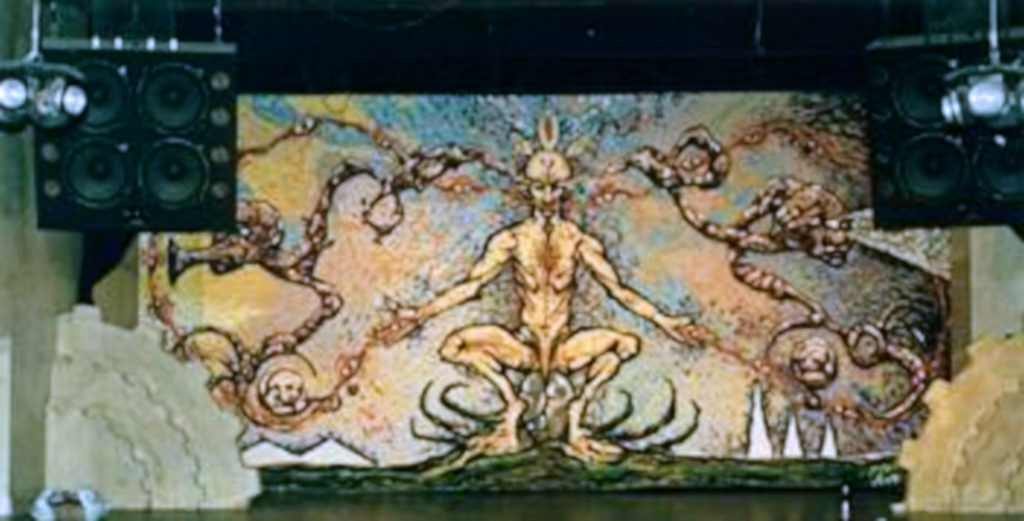
Underneath the layer of paint depicting the egg the Shaman is sitting on, Clive had originally painted a skull— by the time of the formation of the Baghavad Gita, the term nirvāna was used to describe the state of transcendence of both birth and death. Coincidence, or was the creative process guiding him through a subconscious evolution of its own symbolism? The Shaman’s feet are literal roots that merge with the world, the Root chakra (feet) being the keeper of karmic cycles and past lives. The painting is a snapshot of a moment that is an eternal present, all-encompassing. Form is emptiness, emptiness is form.
The Metaphysics of Light, Wisdom & Sound’s composition comes together with one tendril face beaming light through its eyes on the right, another tendril face emerging on the left, displaying a trumpet-like mouth; the enlightened Shaman appears to represent Wisdom as an almond-shaped halo, or a sacred flame, floats over the Sahasrara or Crown chakra like a mandorla or vesica piscis, connecting the Shaman to the wisdom of the universe, the same shape also appearing as an opening over the Anahata, the Heart chakra, associated with love and how you move love through your life; a red circle can also be seen over the throat, a likely possible representation of the Vissudha or Throat chakra— what are Love and Wisdom worth without Sound and the ability to communicate that wisdom, to express that love?
Image 2. Mandorla and different types of halos (after Audsley & Audsley 1865, 11, pl. II)
I find Allen Ginsberg’s recitation of the Heart of the Perfection of Wisdom sutra feels more relevant after looking at The Metaphysics of Light, Wisdom & Sound this way. The sutra ends with the mantra:
गते गते पारगते पारसंगते बोधि स्वाहा
Gate, Gate, Paragate, Parasaṃgate, Bodhi, Svaha!
Gone, Gone, Gone Entirely, Gone To The Other Shore, Awakened Mind, Svaha!
Beyond the Limits is a blog feature series started by Rob Ridenour.
Special Thanks to Ed Martinez, Nina Arlene, Phil and Sarah Stokes.
Further Reading:
– Light, Wisdom and Sound, Clive Barker Archive, 2020.
– The Metaphysics of Light, Wisdom, & Sound, Lost Souls, 2000.
– Perfect Wisdom Sutra (ASV #19), Allen Ginsberg Project, 2011.
– The Aureole and the Mandorla: Aspects of the Symbol of the Sacral from Ancient Cultures to Christianity. STUDIA ACADEMICA ŠUMENENSIA 3, 2016. [ResearchGate]

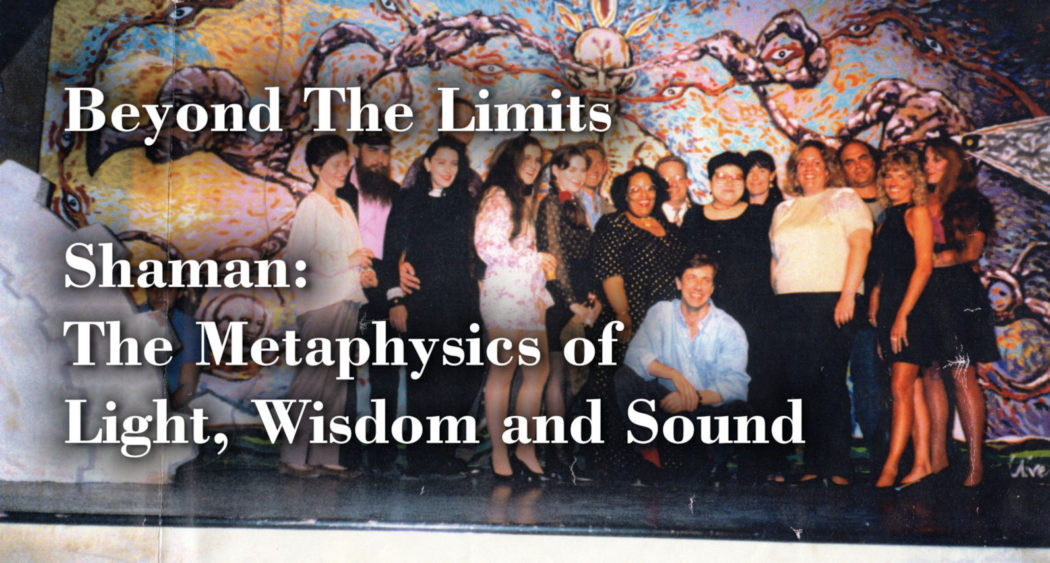

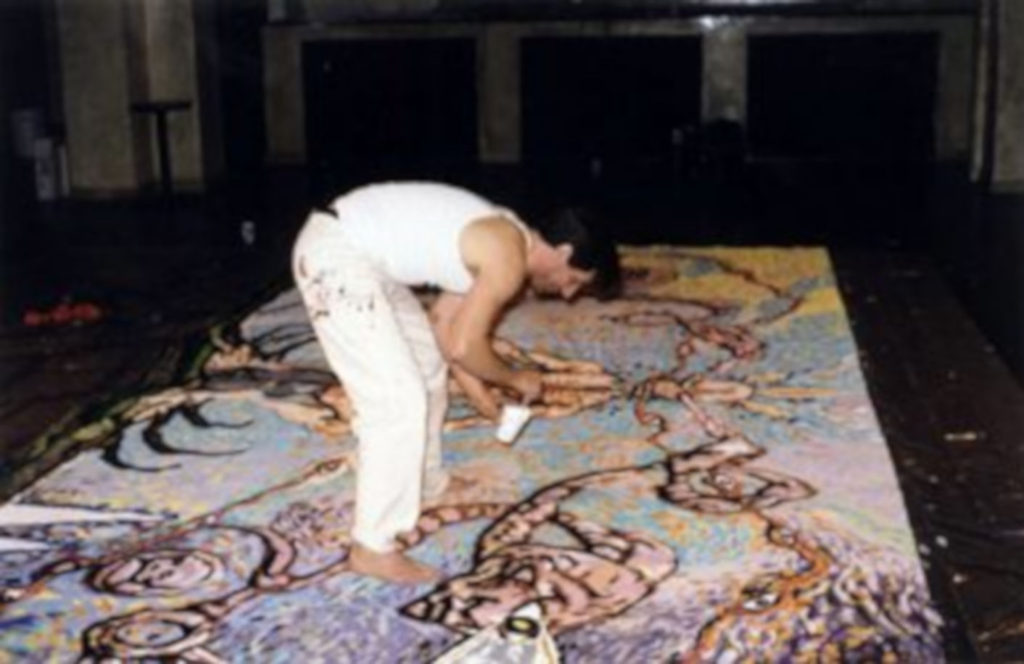
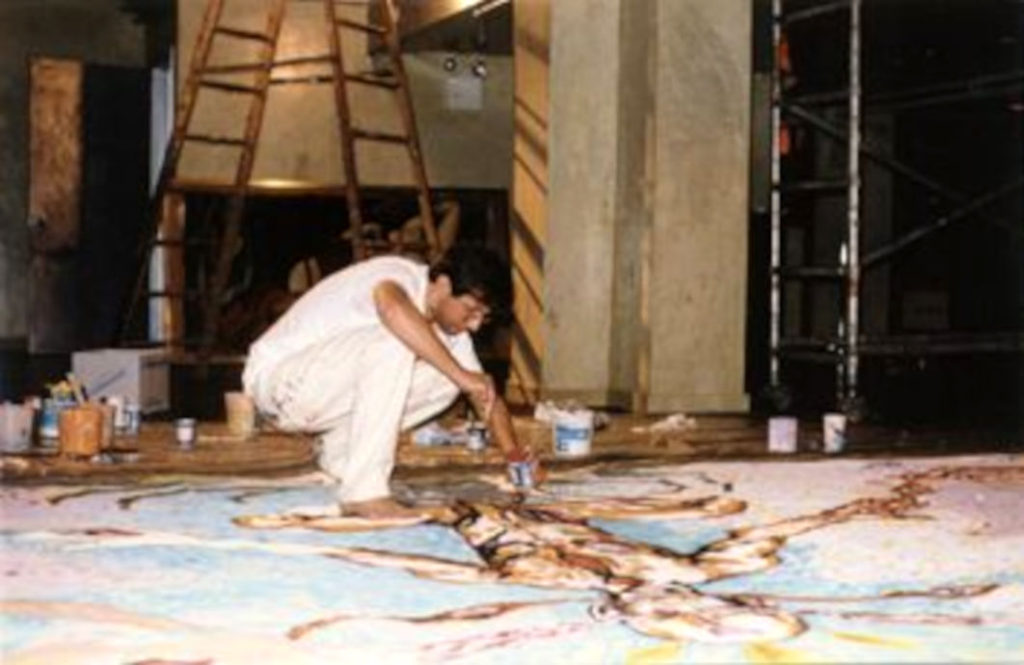
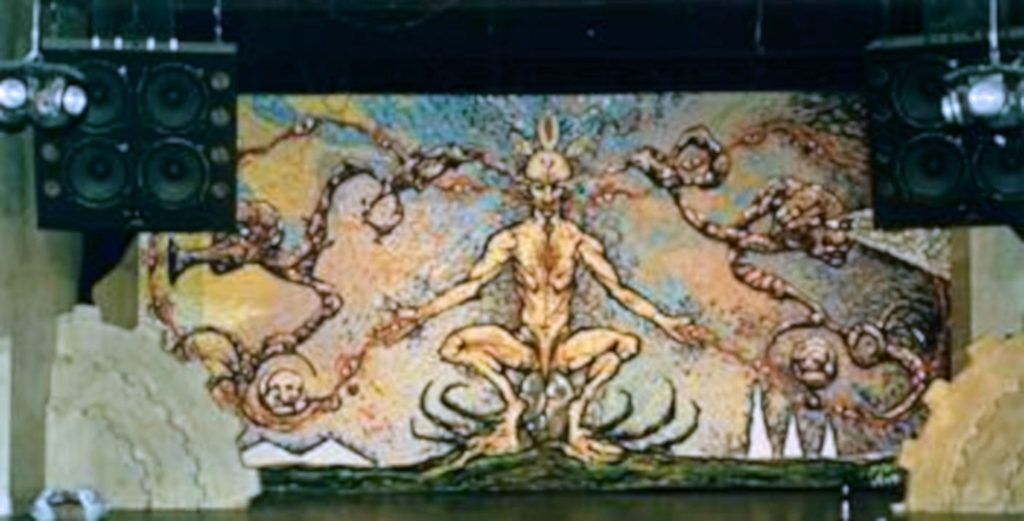
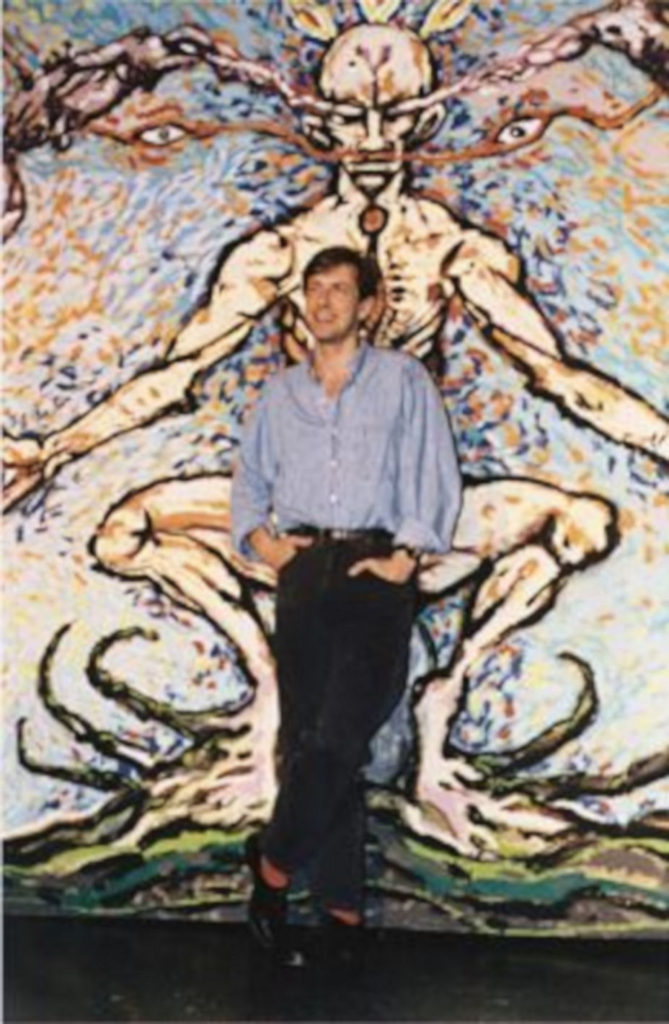


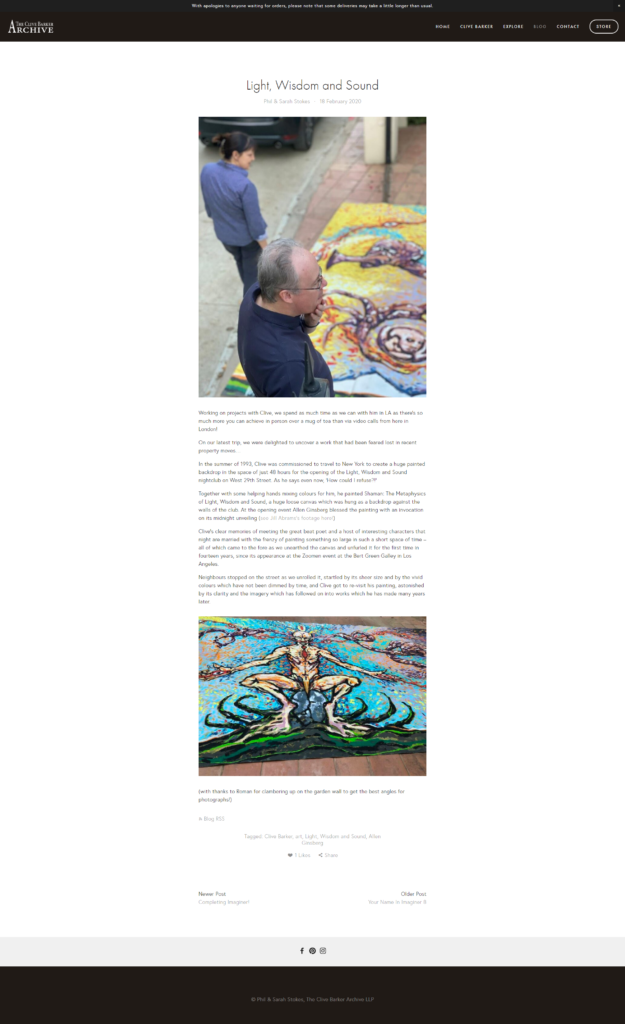

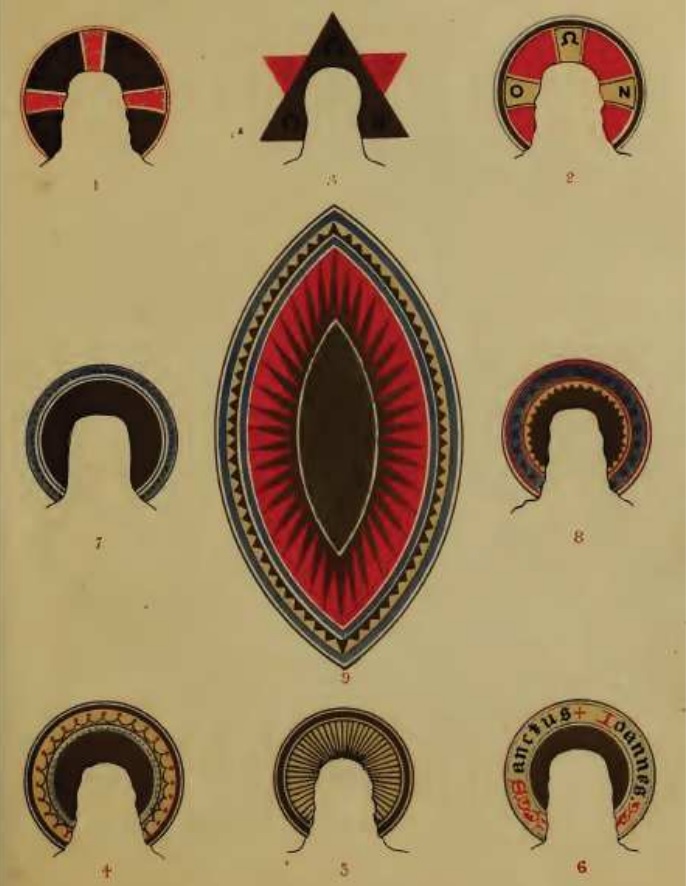
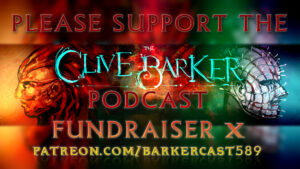




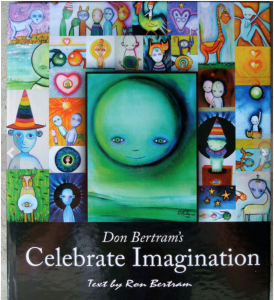















Thanks for shining some light on this art event in Clive’s early arrival to the states.
I became involved with the Barker scene about a year after the mural was painted so did not
have the opportunity to view the art at it’s inception.
One of my regrets in the Barker universe was not to be around in ’93 to view that art as
it hung in the Bess Cutler Gallery. They sent me the catalogues of work but anyone that has seen
one these listings know that it was not much more than a black and white, xeroxed and stapled together listing of his works with the sizes and asking prices.
The first piece I purchased from the gallery was “The Fetal Position” an oil crayon work that he never even signed. It was the next year that I got him to send me a personal verification letter.
I have to say that those were the days..wouldn’t trade them for anything….
Thanks again for the article and podcast..Let’s see what the future brings…